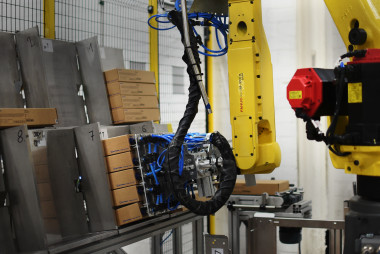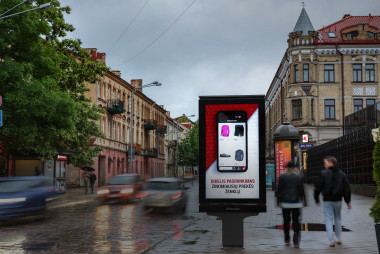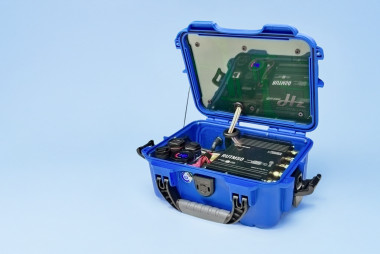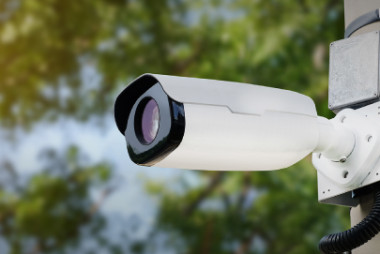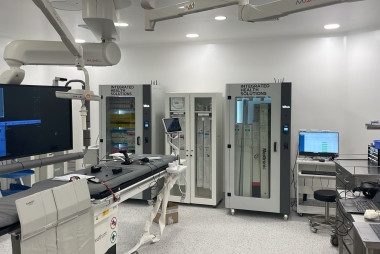SUMMARY
When Charlie Chaplin critiqued the machine-like routine of factory workers in his 1936 classic Modern Times, he probably didn’t imagine that factory work routines would belong to literal machines in the not-so-distant future.
That future is now our present, where automated factories full of robots are a marvel of technology. It requires precise calculations that enable the robots to work in tandem seamlessly, almost like an elegant dance.
But these robots are not autonomous; they operate based on instructions relayed to them. If they happen to get the message too late for any reason, one poorly-timed robotic movement can quickly cascade into a disaster.
CHALLENGE
One of the key pieces of automated factory assembly lines is carrier robots. In a coating plant, for instance, these carrier robots move material from loading stations, apply a coating recipe assigned to them, and move the now- coated material from the unloading station. Basically, if any industrial piece you work with is coated with some sort of metal or plastic, these carrier robots are responsible for it.
Because these robots are in constant movement and an external system tells them which material should go to and from which station and when, any lapse in internal communication can cause them to collide. This disrupts the assembly line and damages the robots.
A lot of money is lost when communication isn’t fast enough to prevent a collision. Is there a failsafe way to ensure the speed of this internal communication?
PARTNER
Galvano Automation is a Turkish veteran in coating plant automation systems. With over 20 years of experience and over 500 factories working with them, its visionary team is bound to find an innovative solution to any coating problem.
SOLUTION
Galvano’s way to prevent a lapse of communication was to design the carrier robots’ connectivity infrastructure with a high-performance wireless router in mind: our RUTX10 industrial router.
The RUTX10 is connected to a pair of PLCs that control the carrier robots and wirelessly receives and relays instructions from the coating plant’s control system. In other words, the router becomes a high-speed mediator between input and output. What ensures the seamlessness of the process is RUTX10’s 5Ghz, Dual-Band Wi-Fi, which brings the communication speed to the millisecond level and minimizes the risk of latency issues. This makes it perfect for high data transmission and robust wireless performance, and an excellent collision preventer.
In addition, thanks to its compact size, DIN rail mounting option, and support of a long list of possible interfaces, it does so without adding complexity to the already-complex factory setup.
TOPOLOGY
BENEFITS
- The RUTX10’s 5Ghz, Dual-Band Wi-Fi ensures high-speed data transmission at the millisecond level, making it perfect for automated communication that can’t afford to risk latency issues.
- Supporting a wide range of interfaces allows this router to remain flexible in many different industrial settings and applications.
- A compact size and DIN rail mounting option make this device easy to slot into your factory setup.
- Designed with rugged aluminum housing and vibration resistance, the RUTX10 is tailor-made for factory environments.
WHY TELTONIKA NETWORKS?
When the difference between success and failure lies at the millisecond level, you want to do all you can to ensure high communication speeds are maintained. We design our connectivity devices with this type of precision in mind so that they can reliably and consistently deliver on these metrics. When you choose a Teltonika Networks device, you choose guaranteed excellence.
Featured product
RUTX104 x Gigabit Ethernet ports with up to 128 port/tag-based VLANs supported
Wave-2 802.11ac Dual Band WI-FI and Bluetooth LE
Numerous VPN Protocols supported, including OpenVPN, IPsec, PPTP, L2TP & DMVPN
Compatible with Teltonika Networks Remote Management System

